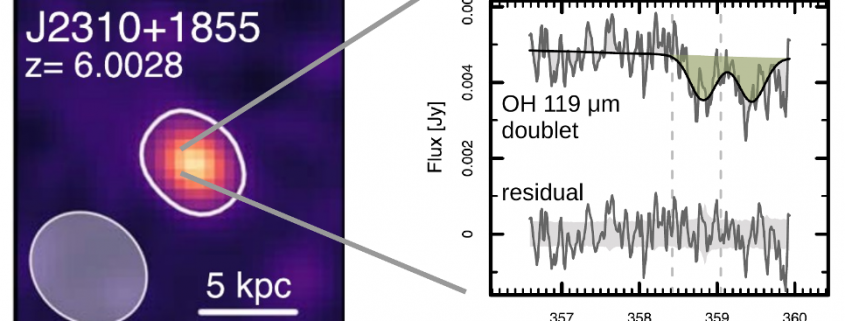Science highlight: Tracing galaxy mass loss via OH absorption at high redshift
Mass loss from high-redshift galaxies is crucial in quenching star formation and enriching the intergalactic medium. Only limited information is available on the gas mass loss of galaxies at z>6. Using ALMA observations of OH 119 μm doublet toward a small sample of high-redshift unobscured QSO host galaxies, Butler et al. (2023, ApJ 944, 134) trace the outflows blueshifted absorption. Estimating the mass loss rate, the authors conclude that the mass loss is likely driven by star formation alone, with only a small contribution from the AGN. Viewing geometry and coverage factor are important factors in the interpretation of the absorption lines and inference of the mass loss rates. Higher resolution follow-up observations with ALMA, and data on a larger sample, will further strengthen the presented results. This work included contributions from astronomers from Leiden, Delft, Heidelberg and Bologna.
Above Figure: ALMA continuum (left) and OH absorption (right) observations of one of the unobscured QSO host galaxies studied by Butler et al. (2023). Blueshifted OH 119 μm absorption traces star-formation driven mass-loss from this z=6 galaxy.



